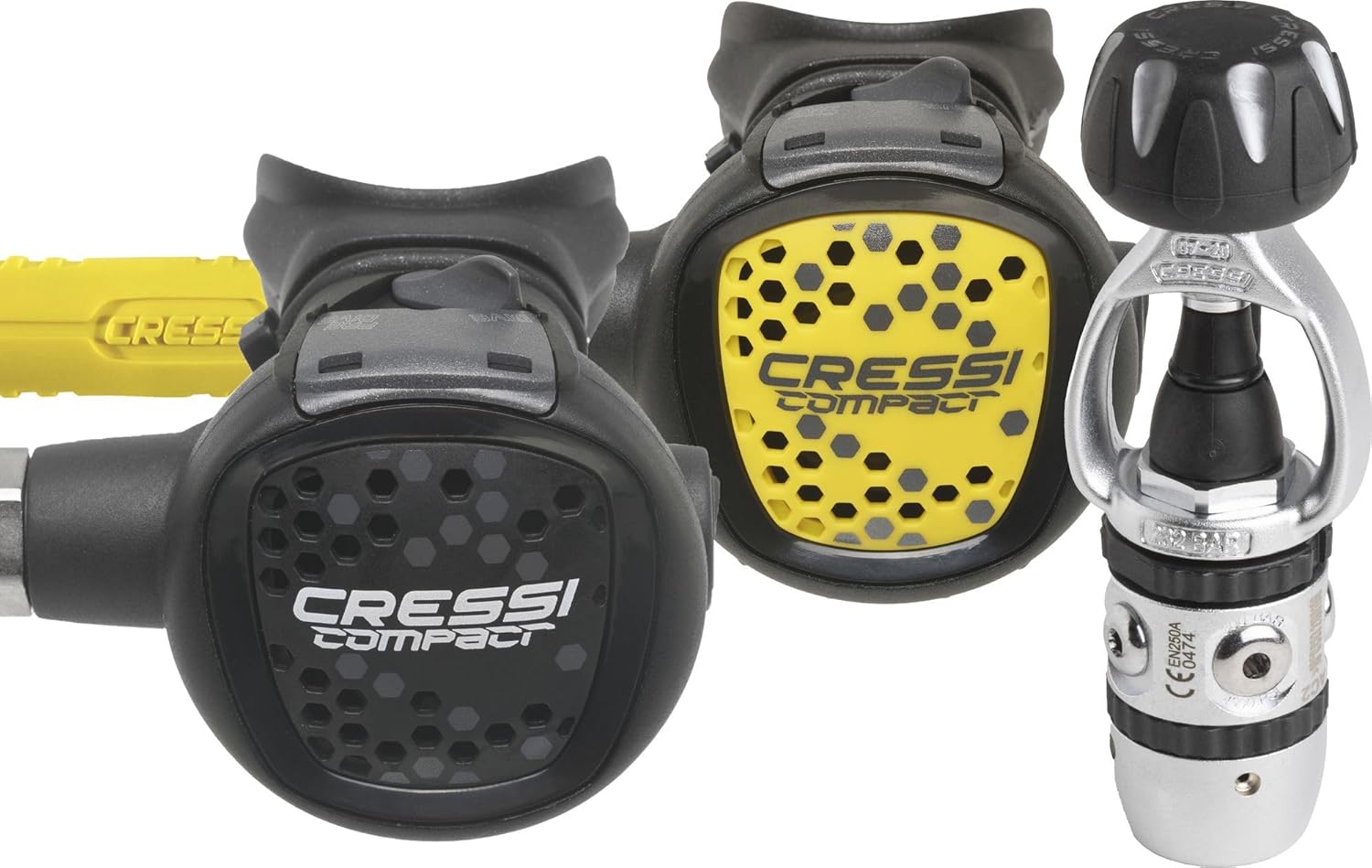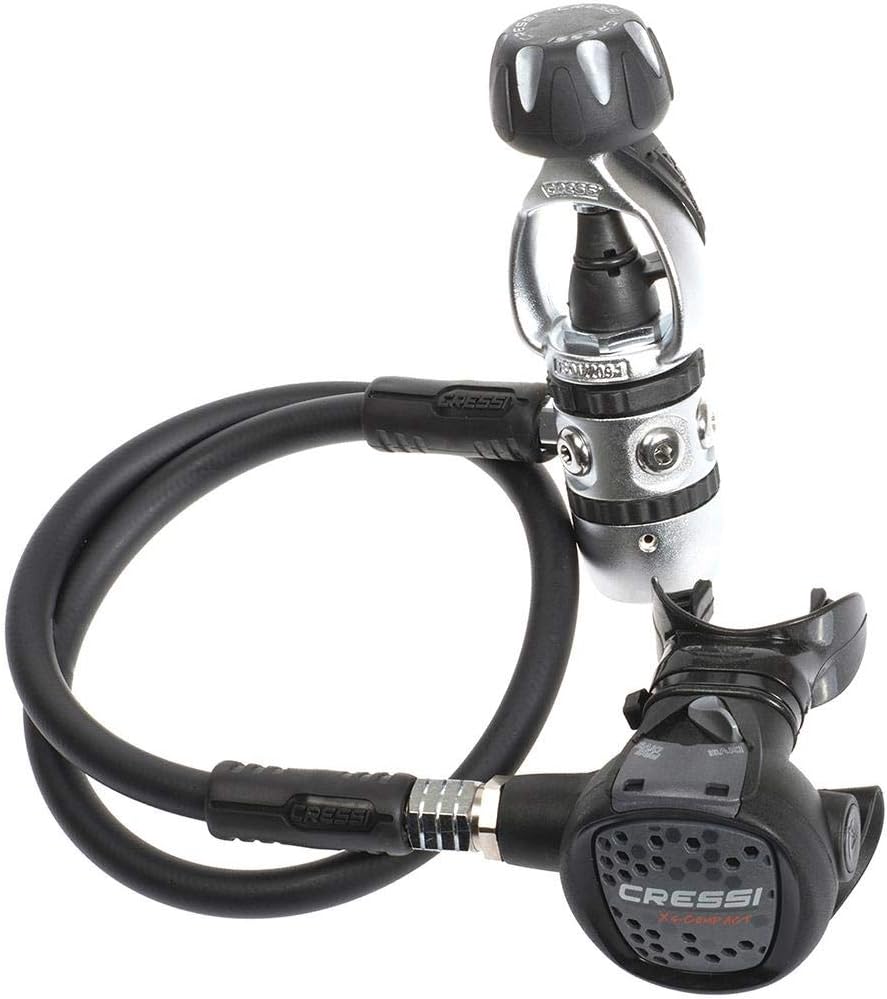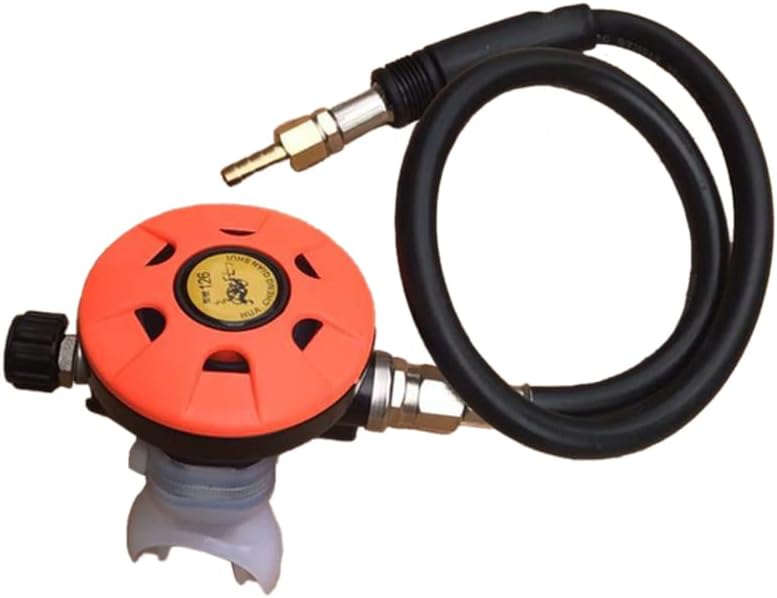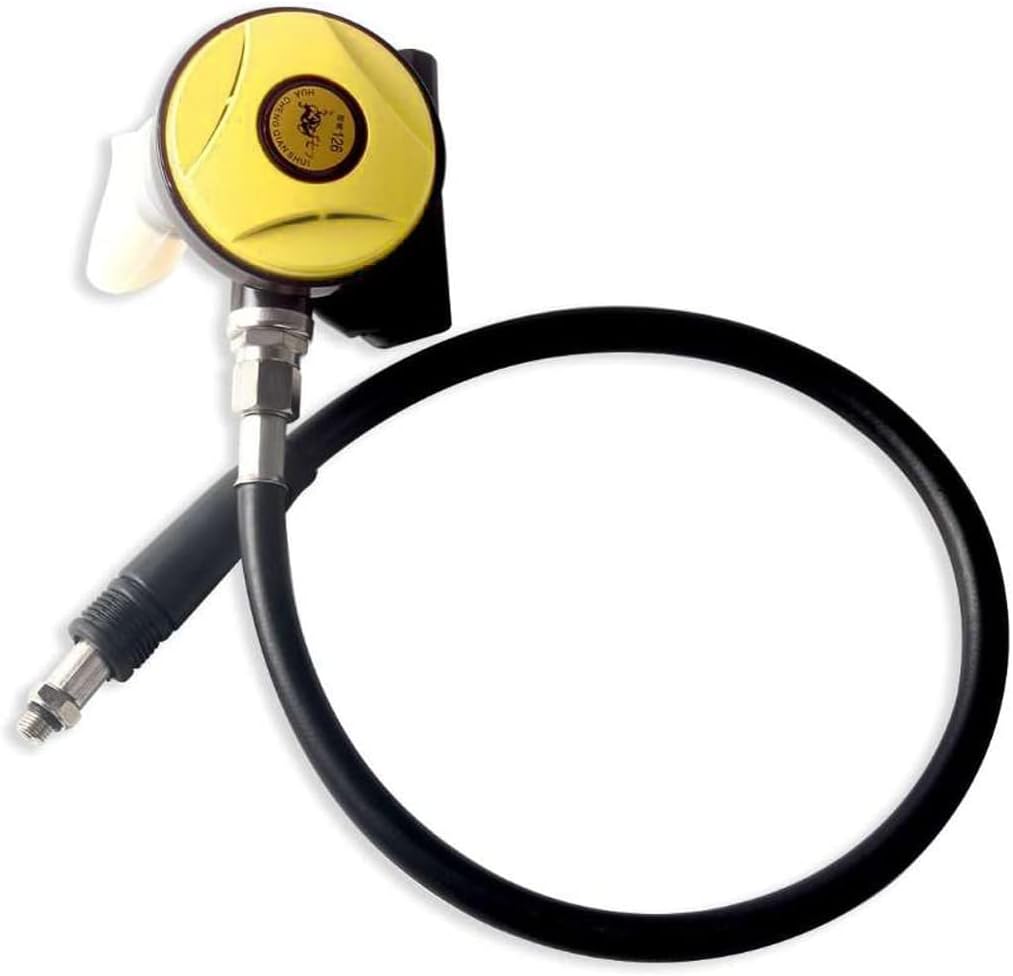Here’s an overview of the Best TOP 5 Best Scuba Regulator | Ultimate that we’ll explore today:
Choosing a scuba regulator is a balance between reliability, ease of use, maintenance practicality, and budget. Regulators are the lifeline of a dive, delivering air from the tank to the diver under varying depths and pressures, so performance consistency and ease of breathing matter more than flashy features. This comparison reviews five regulator options spanning price, build, and target use: two Italian-built Cressi models known for beginner-friendly piston-first-stage systems, a budget octopus-style secondary regulator from Gaderth, a lightweight aluminum first stage from Yuecoom, and a mid-range Maisivac secondary with an integrated hose setup. Our testing approach focuses on breathing-resistance, ease of maintenance, field-serviceability cues, and real-world use cases (pool and open-water scenarios), while noting warranty, material choices, and weight considerations that affect transport and corrosion resistance.
1. Cressi Scuba Diving Regulator Kit – AC2 Piston 1st Stage
- Brand: CRESSI
- Manufacturer: CRESSI
Overview: This kit pairs Cressi’s proven AC2 piston 1st stage with the compact XS/Compact 2nd stage and a matching Octopus Compact. The construction emphasizes a simple, robust piston design (often called a “work mule”) and a lightweight, ergonomically optimized second stage using hi-tech polymers and ABS elastomer. Weight is moderate, and the packaging reflects a straightforward value proposition for travelers or budget-conscious divers who want Italian engineering pedigree without premium price. The 2-year limited warranty aligns with Cressi’s reputation for practical, reliable gear built to withstand intensive use.
Performance-wise, the piston-first stage trades some multi-stage efficiency for rock-solid reliability in a wide range of depths and temperatures. The XS Compact’s reduced component count can simplify maintenance, and the elastomer cover adds impact resistance in travel scenarios. However, because the model year listed is 2015, recent design updates may be absent, and the absence of a built-in environmental seal or modern high-flow geometry means it may feel slightly less forgiving at deeper or more demanding regimes compared to newer designs. The included octopus shares the same casing as the secondary stage, which fosters a compact, balanced profile that’s ideal for travel or as a backup regulator.
Pros
- Proven, simple piston 1st stage with high reliability
- Lightweight, compact second and octopus stages
- Italian design heritage and robust construction
- 2-year limited warranty
- Good value for travel-focused setups
Cons
- Older model year (2015) may lack newer diaphragms or updates
- No advanced ventilation or demand-flow features
- May require more frequent maintenance for high-use centers
2. Cressi Intense Use Scuba Diving Regulator | Piston 1st Stage
- Brand: CRESSI
- Manufacturer: CRESSI
Overview: This model reiterates Cressi’s AC2/Compact pairing with a piston 1st stage and compact 2nd stage, marketed toward beginners and travelers needing affordability without sacrificing brand reliability. It features a conical filter for particle protection and a hex key-driven external LP adjustment, emphasizing serviceability. The product emphasizes a balance of performance with a straightforward build, making it appealing to dive centers or individuals who want a robust, easy-to-maintain regulator that’s capable of handling a broad range of use scenarios.
Deep-dive performance indicates the conical filter and asymmetrical 2nd-stage cover contribute to consistent airflow and predictable inhalation even under variable tank pressures. The design aims for a generous air supply without heavy reliance on Venturi boosting, which can simplify user experience for novices while maintaining safety. Weight is moderate (approx. 923 g), and the overall assembly remains approachable for users who want a repair-friendly system. Potential drawbacks include the age of the design and limited mention of modern enhancements like environmental sealing or low-venturi optimization compared to the latest models.
Pros
- Strong value for money with reliable piston-first-stage
- Conical filter aids protection against particulates
- Service-friendly with external LP port access
- Made in Italy with recognizable Cressi quality
- Great option for beginners and travelers
Cons
- Older design without the latest efficiency tech
- Weight slightly higher for a compact setup
- Limited information on warranty duration beyond standard policy
3. ScubaRegulator
- Brand: Gaderth
- Manufacturer: Gaderth
Overview: This budget option from Gaderth emphasizes an orange, high-visibility secondary regulator with a silicone mouthpiece and adjustable 2nd stage. It’s designed as a secondary/octopus regulator to accompany a main regulator in recreational setups. The emphasis on silicone mouthpiece comfort and adjustable air output positions it as a practical add-on for divers who want a low-cost safety backup that can be deployed in emergencies or for students learning basic diving skills.
Performance and usability considerations include the adjustable 2nd stage and the breathable silicone mouthpiece that reduces jaw fatigue during longer sessions. However, the lack of detailed 1st-stage specifications, environmental sealing, or a known service interval raises questions about long-term reliability in mixed gas or deeper dives. This model is best suited as an economical secondary or as a training aid rather than a primary regulator in demanding dive conditions.
Pros
- Very affordable price point
- High-visibility orange for quick identification
- Silicone mouthpiece for comfort
- Adjustable 2nd stage for user-specific breathing feel
- Lightweight and easy to transport
Cons
- Limited technical specs for the 1st stage
- Not designed as a primary regulator for deep or tech dives
- Uncertain long-term durability and warranty details
4. First Stage Scuba Diving Regulator
- Brand: Yuecoom
- Manufacturer: Yuecoom
Overview: Yuecoom’s first-stage regulator leverages an aluminum alloy yoke-mounted design with safety features like a surplus pressure gauge and a pressure reducing valve. The emphasis is on reducing breathing resistance, with a focus on robust construction for durability and a secure connection to the tank. This model stands as a mid-priced option, targeting divers who want a sturdy 1st stage with a strong emphasis on safety pressure management and compatibility with a range of second stages.
In practice, the aluminum alloy construction provides good corrosion resistance in typical saltwater environments if properly rinsed after dives. The inclusion of a surplus pressure gauge helps divers monitor tank status, which is beneficial for troubleshooting breathing resistance issues and ensuring stable performance across dive profiles. Potential drawbacks include the lack of explicit details about port configuration (HP/LP port count) and whether this 1st stage is diaphragm-based or piston-based, which influences performance consistency in cold water or high-flow scenarios.
Pros
- Aluminum alloy build offers good strength-to-weight ratio
- Surplus pressure gauge enhances safety monitoring
- Yoke-mounted for easy rotation and compatibility
- Designed to reduce breathing resistance
- Solid mid-range option with broader compatibility
Cons
- Limited port configuration details
- No explicit information on cold-water performance
- Warranty and serviceability details are not specified
5. 2nd Stage Scuba Diving Regulator Equipment Adjustable Explorer Diving Regulator Hookah with Silicone Mouthpiece
- Brand: Maisivac
- Manufacturer: Maisivac
Overview: Maisivac presents a 2nd-stage style regulator geared toward exploration or surface-supplied configurations (hookah setups). It features a silicone mouthpiece, brass connector, and a 0.75 MPa air input threshold, with an under-chin exhaust directing bubbles to the sides. The inclusion of a simple hose and connector makes it attractive for budget-conscious buyers seeking a lightweight, easy-to-use secondary regulator for shallow-water use or hookah-style setups.
In use, the silicone mouthpiece adds comfort and reduces jaw fatigue, while the under-chin exhaust helps manage bubble noise and visibility. The focus on a 25-35 Bar input range suggests compatibility with low-pressure sources typical of surface-supplied systems. Practically, this option shines for recreational pool sessions, shallow reef trips, or as a classroom training tool. Potential limitations include its primary suitability for less demanding diving conditions and lack of detailed endurance testing data or warranty information compared to more established brands.
Pros
- Budget-friendly option with simple integration
- Silicone mouthpiece for comfort
- Under-chin exhaust design reduces bubble interference
- Lightweight and easy to transport
- Works well for shallow or surface-supplied setups
Cons
- Not ideal for deep or technical dives
- Limited performance data and warranty details
- Potential durability questions due to plastic construction
Frequently Asked Questions
We’ve compiled answers to the most common questions about scuba regulators to help you make an informed decision.
Conclusion
.
.
Final thoughts here.




